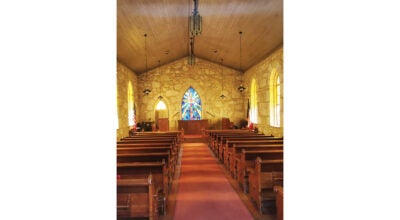‘Without Sanctuary’ is powerful and painful
Published 6:00 am Friday, March 19, 2004
I had heard stories about it, although it wasn’t openlydiscussed around town when I was young, or now, when I’m not.
Every now and then over the years I’ve seen mention of it inprint.
I could take you to the approximate location of where themerchant’s store once stood.
Many times, while traveling Highway 404, I’ve seen somebodypoint to a side road and say, “that’s where they took them.”
Last week I came face-to-face with the atrocity that happened inmy hometown — Duck Hill, Miss. — on April 13, 1937.
It is part of the “Without Sanctuary — Lynching Photography inAmerica” exhibit now on display at Jackson State University.
Although it was at the end of the exhibit, seeing the otherphotos did not prepare me. My heart sank and I wanted to weep whenI came upon the 8 X 10 picture of the remains of “Boot Jack”McDaniel, one of the two lynched men.
McDaniel and Roosevelt Townes, both black, had been arrested forthe murder of a white grocer. They were arraigned at the countycourthouse in Winona on that April afternoon but were abducted byan angry mob.
My mother, then a 13-year-old girl, has told me she remembersseeing the school bus carrying the men and mob pass her family’shouse. That bus traveled to a location about eight miles east ofthe town.
It has been reported that nearly 500 spectators watched asMcDaniels and Townes were fastened to adjacent trees with chains. Ablowtorch was used on McDaniels’ legs and torso until he confessedand named Townes as his accomplice. McDaniels was then shot todeath.
Townes was not so lucky.
The mob turned the blowtorch on him until he, too, confessed. Hewas then burned alive.
Nobody was ever charged with killing the two men.
“Without Sanctuary” is powerful, and it will be on display atJackson State through July 4.
The exhibit was put together by collector James Allen, who foundthe photos and postcards over a 25-year period. Quite often, photosand postcards were souvenirs from lynchings throughout America.
Yes, the photos are gruesome; some more than others. What ispleasant about man’s inhumanity to man?
The true madness of the times is seen in the backgrounds of somethe pictures. Men, women and children gathered around to gawk; menposing by corpses as if they were no more than a hunting trophy,which I guess they were; a little girl in her best Sunday dressstaring up at dead man with a faint smile on her face.
But, none of the murders seems to get as much note in theexhibit as the one in my hometown. A newspaper clipping states the”barbaric orgy in Duck Hill not only resolved the (lynching) issuein Congress, it constituted a grim demonstration of the menace oflynchings to law and order and democratic government.”
The article was in reference to the Gavagan Anti-Lynching Bill,which passed the U.S. House in both 1937 and 1940 but died in theSenate due to filibusters by Southerners.
I know “Without Sanctuary” will pull scabs off some old wounds,but I’m glad I saw. It gave me a better understanding of theviciousness of this country’s not so distant past.
As George Santayana said, “Those who cannot remember the pastare condemned to repeat it.”
Write to Nanette Laster at P.O. Box 551, Brookhaven, Miss.39602, or send e-mail to news@dailyleader.com.





